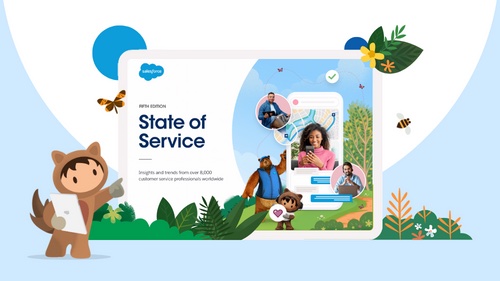
Get your FREE 30-day trial.
Start by selecting a product:
Imagine you have a problem with your cable TV. For instance you might have ordered Foxtel Showcase to see the latest season of House of Cards and you can’t view it. What do you do and how do you fix it? Usually you must choose between using your mobile phone or Twitter to get help from Foxtel. Problem is, you don’t know if the fault is with your Foxtel iQ box, your internet provider or something even more complex.
Beyond that, what would be your view of the customer service you would receive. Chances are you wouldn’t be that impressed if your problem is not dealt with urgently, or is dismissed as the problem of another company and you felt the customer service agent was just trying to get you off the phone.
Bottom line: The contact centre isn’t what it used to be. Both the customers at one end and the companies at the other are different. We’ve identified four trends you must know about if you are to stay ahead of the curve.
Today we use SMS, message apps, phones, Facebook, Twitter and email to keep in touch with those around us. It is easy to lose track of all the channels we use and it is even harder for companies with thousands or even millions of customers to keep track of all the channels those customers want to contact them on.
The medium is the message said Marshall McLuhan.
It isn’t just the number of the channels that is the problem but the nuances of those different channels - each one has different challenges and benefits and unique etiquette. Whether you use them correctly or not can dictate customer satisfaction levels as well as how quickly you can resolve the complaint.
To begin with, some channels are real-time and some aren’t. For instance the phone, of course, is real time. This can make people more impatient - who likes being put on hold? But while the phone can be more challenging in terms of human resources, there can be far higher levels of satisfaction because of its immediacy. However, asynchronous channels such as Twitter or Facebook or email are less interactive and can require wait times which is perhaps less satisfying for a customer but easier to manage for the customer service agent.
Returning to our cable analogy - today’s environment is so much more complex than before. A TV company can have hundreds of channels, not just one or two and on many different media too - online and mobile as well on the TV. This requires a far greater degree of knowledge to resolve customer issues.
How can this be resolved? Your employees are the answer. While no one employee can have all the answers, together teams can work together to pool their knowledge. Collaboration through internal social networks such as Chatter can make it much easier and faster for a customer service agent to get the right answer from the right person when they need it. In the past, agents used to pass difficult problems all around the company until someone was able to solve it - very frustrating for the customer; but today a single agent can take ownership of the problem and access internal sources of expertise or information to solve it themselves.
Collaboration really works when agents are “empowered to act, flexible in approach, and dynamic in delivery.”
In a panel discussion - named “Moving Beyond Standard Metrics” - at a recent conference, three speakers presented different answers to what is rapidly becoming a paralysing problem for organisations: metrics overload. For every metric, however inconsequential, time and effort must be exerted in improving it.
The answer the panel proposed was to cut the number of metrics - dramatically. One particular shift was to re-focus metrics from being activity-based to outcome-based - no longer the number of calls in a day but customer satisfaction levels. Fundamentally, the lesson was to focus purely on the numbers that drove business success.
While circumstances have led to the changes above, this last trend is one of a change in philosophy. Customer Service used to be a nice-to-have but now it has become very much must-have - i.e. it genuinely makes a difference to revenue. Customer service is becoming all-pervasive within organisations, meaning it is no longer just a lone department where the main focus is to cut costs and put out fires. Creating amazing customer experiences is now part of everyone’s remit throughout the company, in every department. Those brands that are doing this well are seeing incredible results.
These four trends will only accelerate. But while data volumes are increasing, so too are the tools to more effectively deal with that data proliferating. This should make the way in which we manage the multiplying customer touchpoints easier and more cost effective.
However, there is only so much technology can do to help us solve the problem. Most important is a culture change that places the customer front and centre of our organisations and reminds us that the point of customer interactions is to delight the customer. This is how the best brands will differentiate themselves from the average and ordinary. A fundamental daily question should be: “does what I am doing matter to the customer?” If the answer is yes, then you are on the right track.
Want to learn about key customer support tips for business growth? Visit salesforce.com or download the free e-book.
